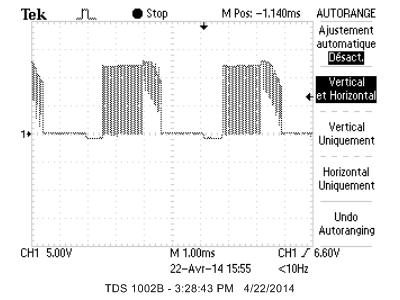Hi,
I'm trying to drive the DRV8313 evm with an external microcontrolleur (ezdsp F2812) and there is some Zero-ohm-Jumpers that should be removed before(R25,R26,R27,R29 and R30 to R34), but when i tried to remove this jumpers i accidentally removed another resistor ( R1 ) which is not supposed to be removed
i want to know is this could have any consequences on the working of the board
best regards





